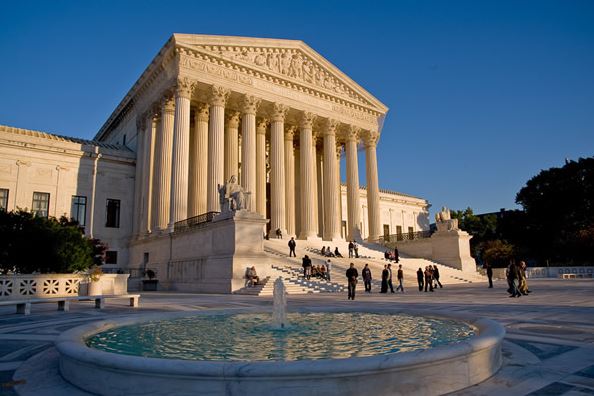What is it like on the ground floor of a revolution in lighting the world? Things look bright, said lighting expert Andy Neal, founder and CEO of LitGreen in Poughkeepsie.
Neal thinks that in the relatively near future, illumination will be more energy efficient, cheaper, brighter and will not necessarily need the type of transmission infrastructure that is an accepted part of today”™s industrial landscape.
“It”™s all a work in progress,” said Neal, who develops LED lighting fixtures that among other locales, have been installed in the tail lights of multi-million dollar race cars and at their service pits, to car washes in Poughkeepsie, to fixtures at West Point, to rails along the Walkway Over the Hudson, and along the block at this year”™s Halloween Parade in New York City where photographers needed bright lights.
A coming revolution
Neal, 48, said the world is just scratching the surface of the illumination potential of light emitting diodes (LEDs) a light source based on semiconductors that have been around since the 1960s for industrial use. But in recent years , LED technology has advanced exponentially along with other advances in semiconductors. This has allowed LED to achieve illumination rates that make them viable in all consumer and business applications, at a competitive cost that provide huge energy savings and which last far longer than current lighting.
Neal said this fact is just beginning to permeate with decision makers. But he does not see himself as a mogul, saying the real potential in LED is creating jobs and providing lighting to places that hitherto were dark, ranging from the Poughkeepsie housing projects to impoverished people living far from electric lines.
“It”™s variations on a theme,” said Neal. “LEDs are simple to install, it is light in a tube that is simple to install, and you can power it with direct hook ups from photovoltaic, from water turbines, even from kids on a bicycle with a dynamo, the technology is so adaptable it doesn”™t matter.”
A simple model
The LitGreen business model is simple, he said, the company will never likely employ many people directly, but its work will produce revenue and create jobs. “It”™s kind of the pyramid idea,” said Neal. “We do the R&D (research and development) design of a product, but we don”™t want to be GE, we don”™t want the 10 million-square-foot facility. We will create jobs via our distributors.”
That approach fits with his concerns about energy efficiency in general. “This model for the Hudson Valley could work as well in Michigan,” Neil said. “It doesn”™t make any sense to truck bits of plastic cross country and burn all that diesel, we could license to a company that makes what they need there.”
Such offhand talk might strike some as overly optimistic, but Neal has turned on a lot of lights during his career, starting with lighting for rock bands in Birmingham, England, as a roadie 30 years ago and advancing to sophisticated computerized lighting systems for such industry heavyweights as Altman Stage Lighting, Vinten Electro Optics, and Philips Bath. Neal has also done consulting and product development for Philips Lighting, Strand Lighting, Sylvania and General Electric.
“About a decade ago I got bored with corporate crap and disappeared up here to the woods,” Neal said with typical candor. Up here, he met and collaborated with renowned physicist, Dr. Ramesh Bhargava, who has some 30 industrial lighting patents and is now an adviser with LitGreen. “We worked together and that led us to make all sorts of LED widgets, and that”™s really where it started,” said Neal.
A growing partnership
He said that partnership blossomed with the creation of “conduit lighting systems,” and said he sold a system to Dyson Racing Teams, who not only wanted the reliable LEDs in the taillights of their costly racer, but wanted an easy-to-assemble and brightly focused LED lighting system for their pits. “They love it. It”™s the brightest thing you can see on pit row and they can put the whole thing up in a few minutes.”
Most famous, of course, is the illumination on the Walkway Over the Hudson. “That got me to thinking, if we could do this, what could we do with buildings?” said Neal. Lighting projects from New York to Lloyd to Poughkeepsie have been installed and Neal is simultaneously branching out.
Efficiency keys the future
“LEDs were not efficient enough even four years ago, but now they are getting to the point they are efficient enough for indoor and outdoor use, now we are just at the start of a revolution in lighting,” said Frank Falatyn, president of Fala Technologies of Kingston, which takes Neal”™s designs and engineers them into products in a series of collaborations.
“Where we can shine and where Andy is working with us, is for higher efficiency products that mass companies haven”™t gotten to yet,” said Falatyn. “There”™s nothing in GE”™s arsenal of products that will come close to what he”™s done.”
He said the difference is nimbleness, and Neal”™s ability to keep abreast of and even drive LED advances, saying the industry is moving so quickly that possibilities are outrunning production. For example, he said, he is already marketing solar power signs using LED lighting, for now a niche market but which will grow as bookkeepers and business owners realize the advantage of saving 80 percent in costs and not having to switch bulbs for a decade or more.
“In a decade you won”™t find any signs that aren”™t LED,” said Falatyn.
And that is only one example, he said, with Neal positioned for now on the ground floor as an inventor in a global economy of corporate giants.
“For LEDs, which is a very fast moving technology, Andy Neal can come out with five new products but GE can capture any market they go into,” said Falatyn. And for the efficient lighting revolution to reach its full potential, he said, “You need both.”


















